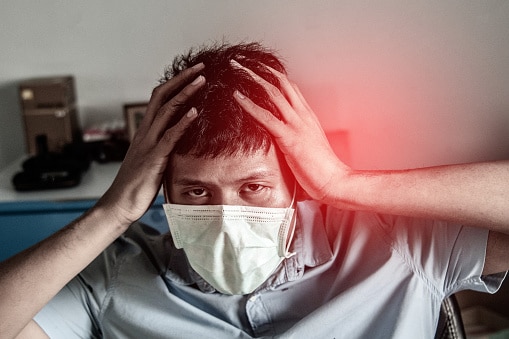As the COVID-19 coronavirus makes its way around the world, it’s increasingly likely that people will be exposed to the virus, which can resemble other flus and colds but — becomes increasingly dangerous as it gets more severe.
Here’s a quick guide to COVID-19 symptoms, what to do if you have symptoms, and when you should see a doctor. It can take 2-14 days for symptoms to actually appear after exposure to the disease, according to the Centers for Disease Control, and when symptoms do appear, they tend to start gradually and become worse.
The main symptoms to look out for are:
- Fever
- Shortness of breath
- Coughing, usually dry (meaning little or no phlegm)
The World Health Organization adds that less common symptoms may also include “aches and pains, nasal congestion, runny nose, sore throat or diarrhea.”
As you may have noticed, these symptoms apply to many other diseases as well. It’s impossible to tell whether you have COVID-19 without a test, and in some areas, there’s a shortage of tests. In the United States, the CDC is currently advising doctors to give tests to:
Loading...
- Patients already hospitalized who are showing symptoms
- Patients showing symptoms who have other chronic illnesses that put them at higher risk, such as lung disease, heart disease, or diabetes
- Patients showing symptoms who, within the past 14 days, had been exposed to someone who has a confirmed or suspected case of COVID-19
If you have mild symptoms and aren’t at risk, the CDC advises against seeing a doctor. Instead, it recommends that you:
- Stay home and avoid public areas.
- Try to separate yourself from the people you’re living with, even to the point of using a different bathroom, if possible
If you belong to a high-risk group, you should call your doctor to discuss what you may need. More advice about what to do when you’re home sick, including tips on cleaning and other care, can be found here.
If you have more severe symptoms such as a high fever, shortness of breath, chest pain, bluish lips or a bluish hue in your face, you should see a doctor immediately. If possible, call ahead to your healthcare provider and let them know you’re on your way and suspect the symptoms are related to COVID-19. That enables them to adequately prepare for you and protect both employees and other patients from possible exposure.
One thing to note: right now researchers think it’s possible for people to be contagious with COVID-19 before showing any symptoms. The World Health Organization also notes that some people who are infected never appear to show symptoms or feel unwell, yet are still able to pass on the disease.
So even if you’re feeling healthy, it’s good to follow your local health authority’s guidelines about social distancing in order to decrease the risk of spreading the disease further. Also, don’t forget to regularly and thoroughly wash your hands with soap and water.
–Alex Knapp, Forbes Staff, Science
Loading...
